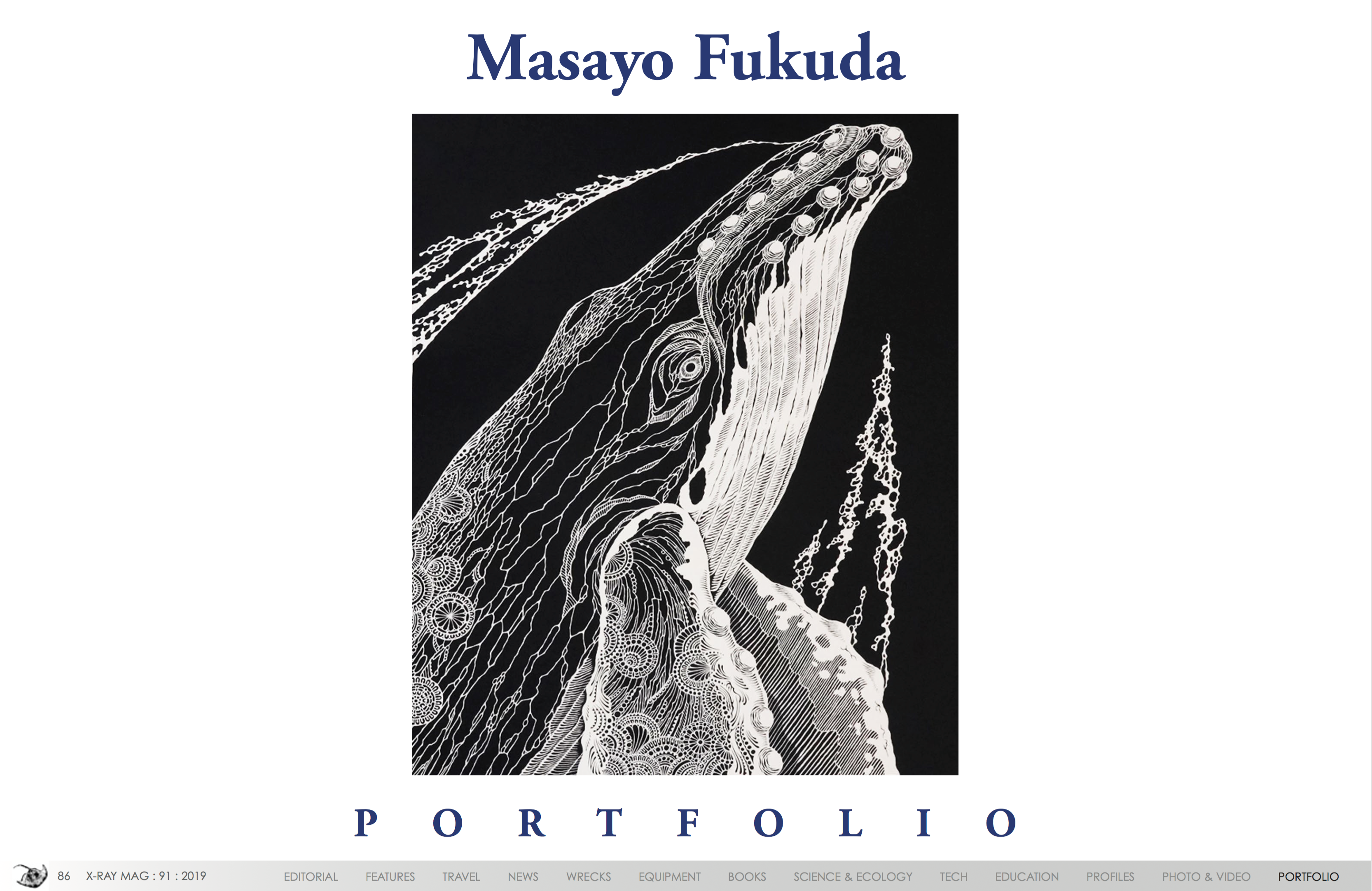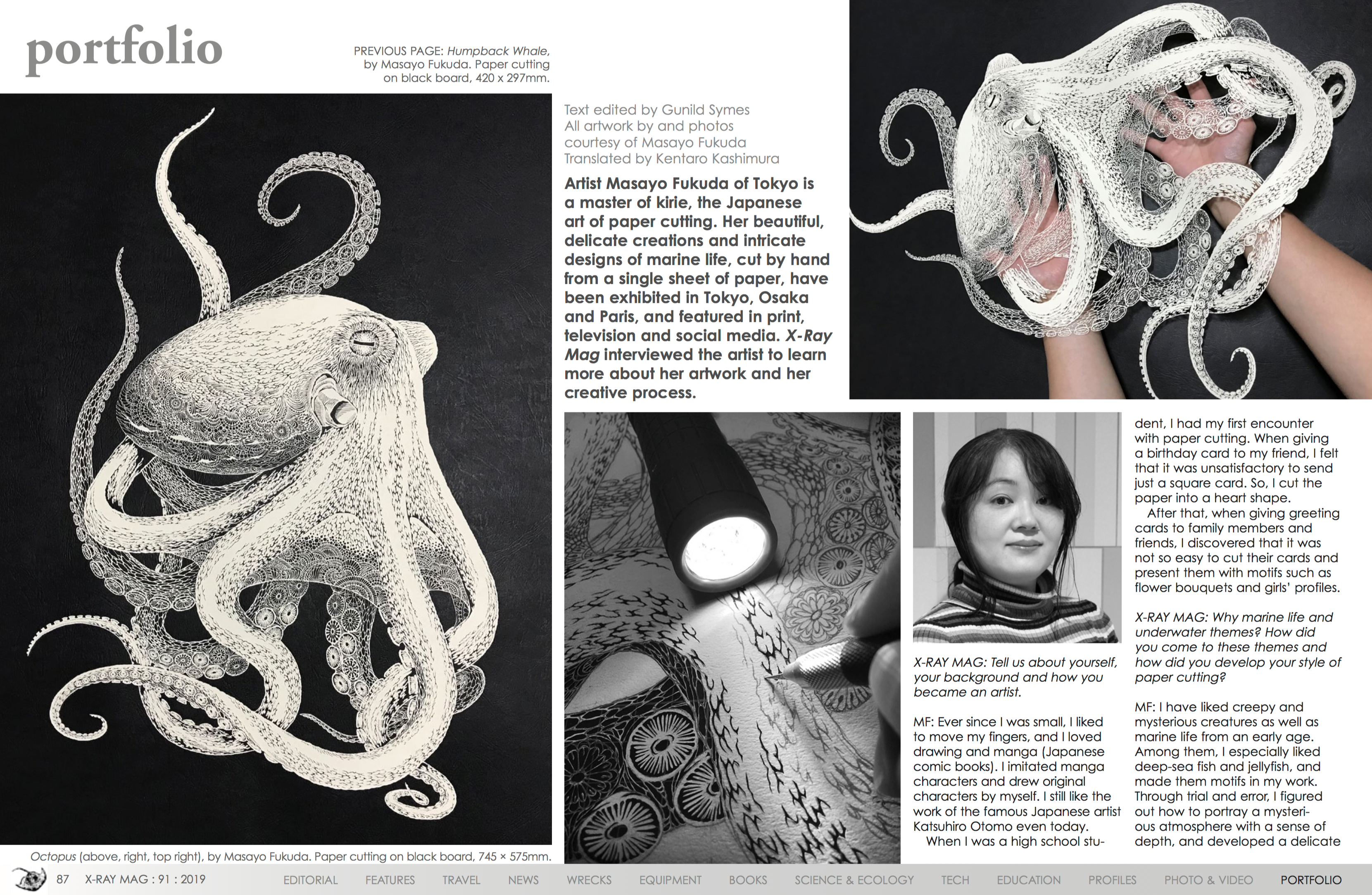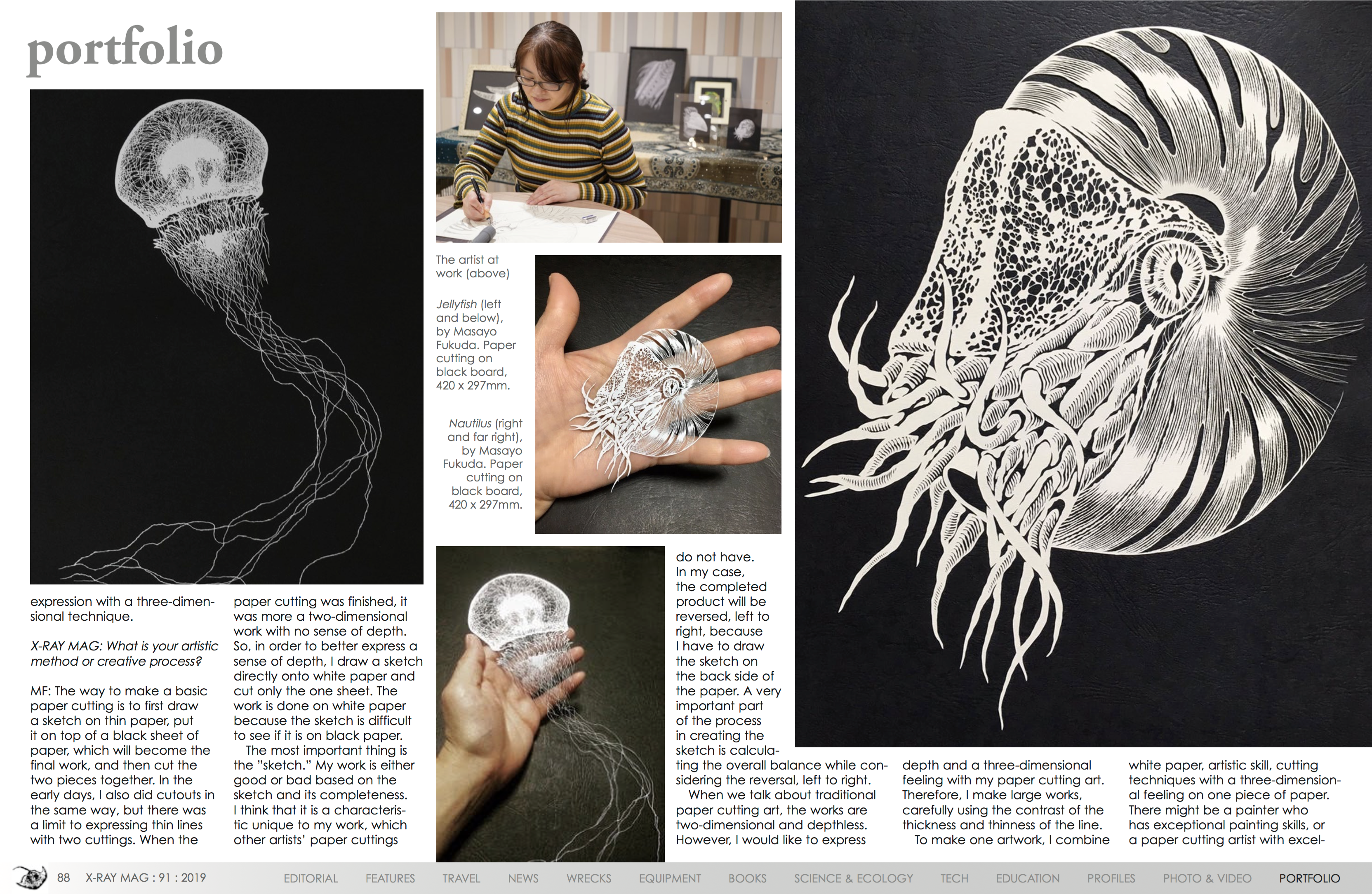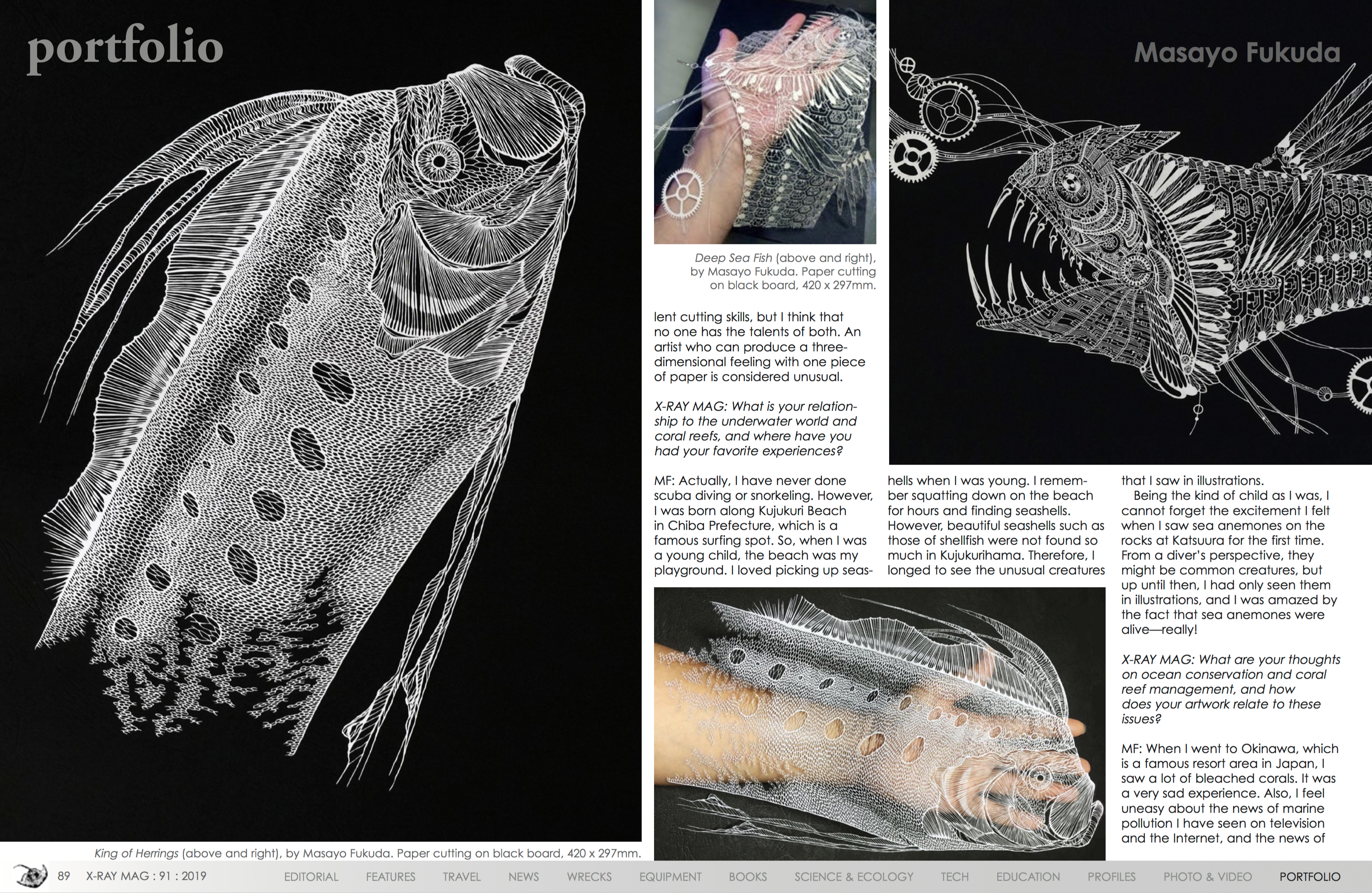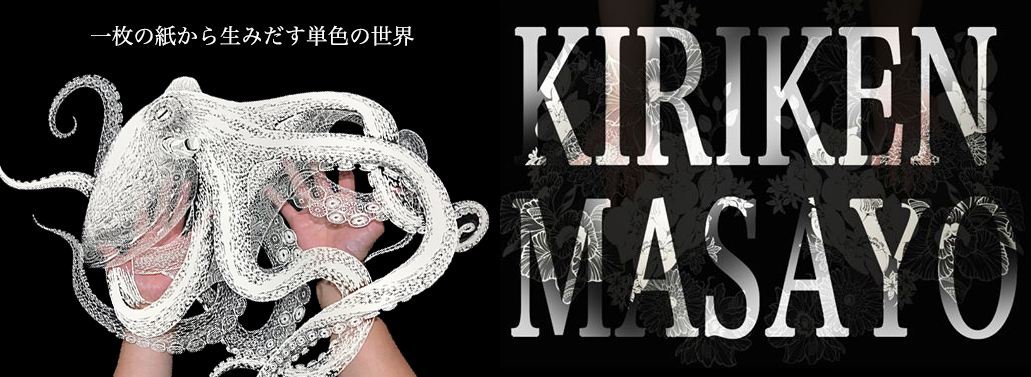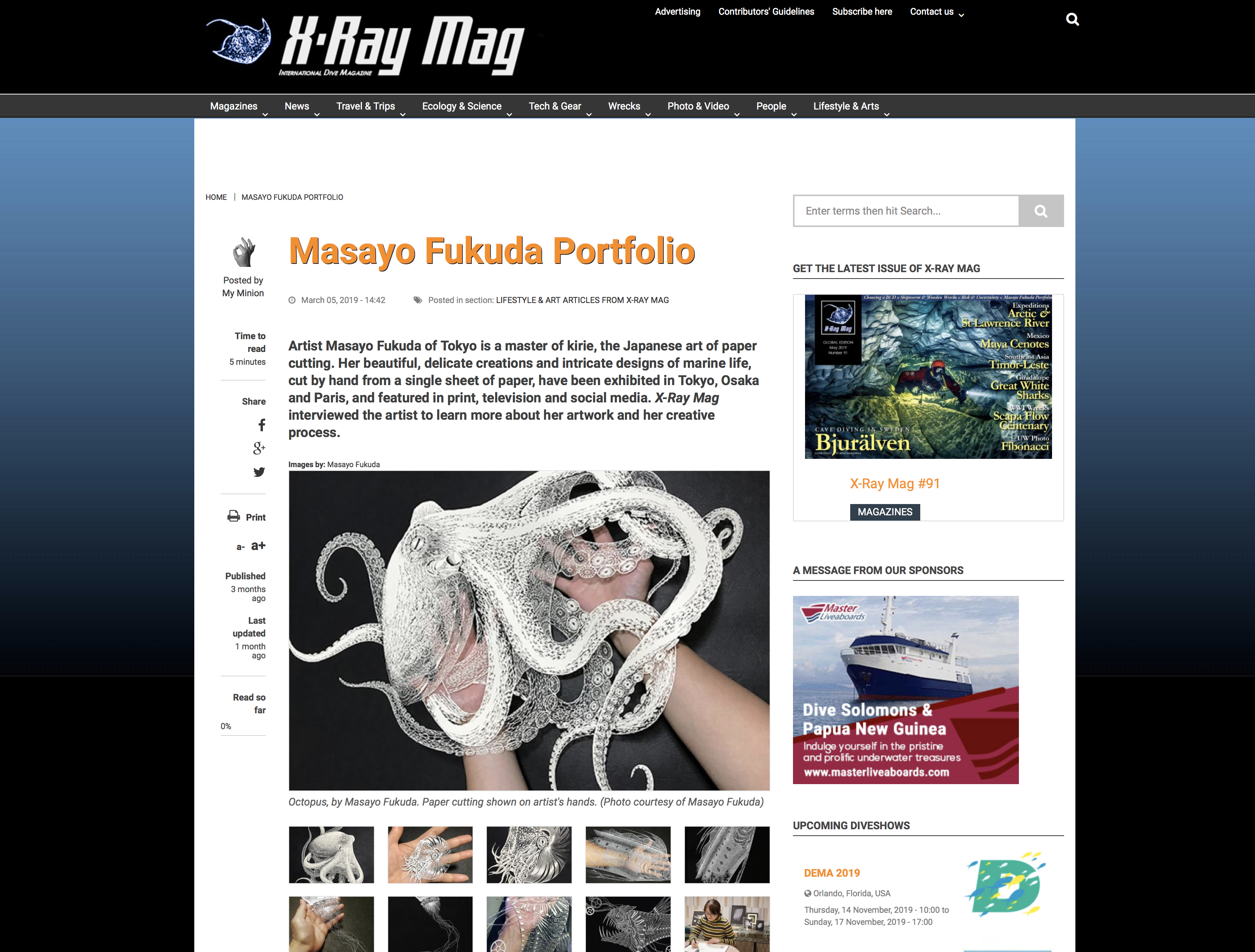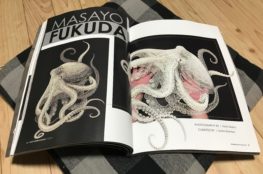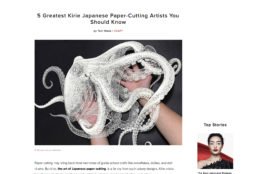Magazineの表紙
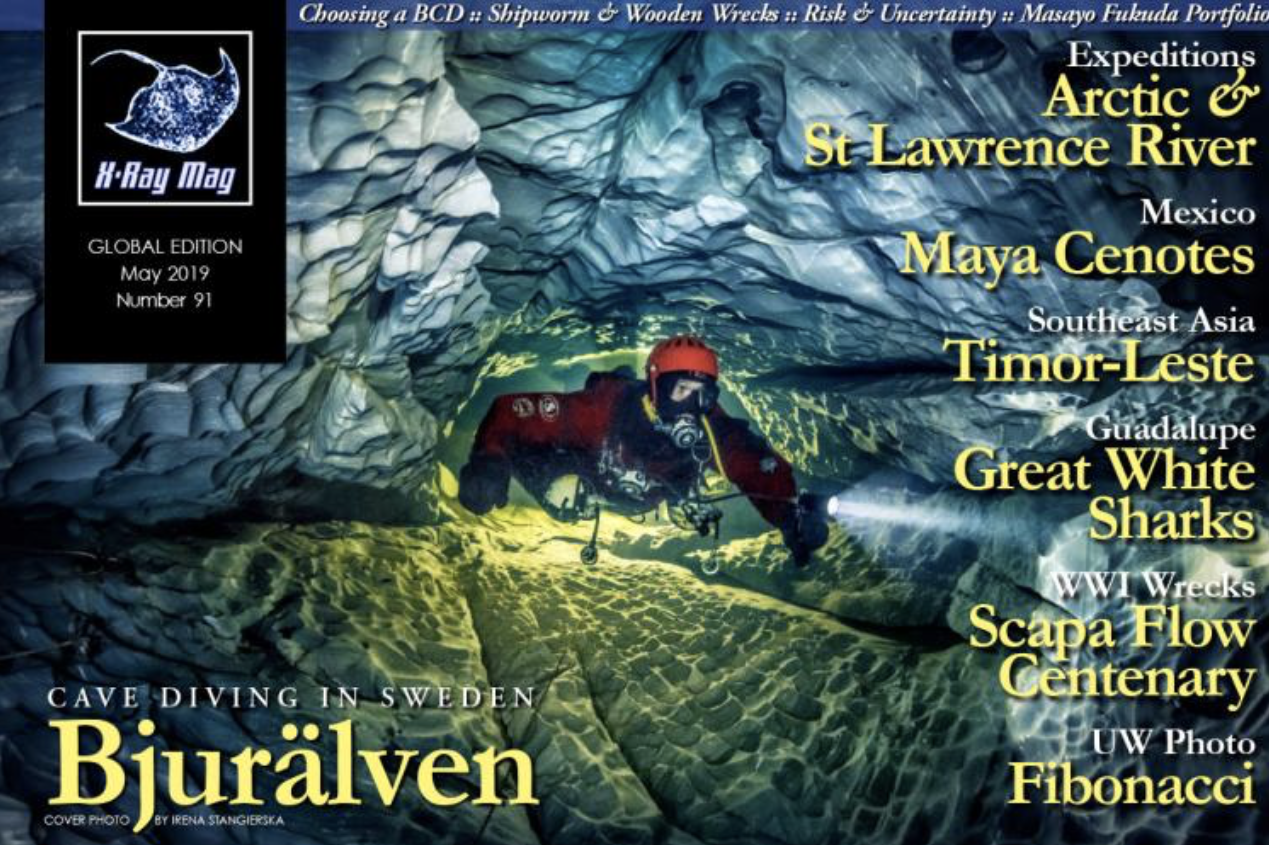
リンク↓
私の記事を抜粋/Excerpt from my article

Artist Masayo Fukuda of Tokyo is a master of kirie, the Japanese art of paper cutting. Her beautiful, delicate creations and intricate designs of marine life, cut by hand from a single sheet of paper, have been exhibited in Tokyo, Osaka and Paris, and featured in print, television and social media. X-Ray Maginterviewed the artist to learn more about her artwork and her creative process.
東京のアーティスト、福田雅代氏は、日本の紙切り術の芸術、kirieの達人です。 一枚の紙から手で切り取られた彼女の美しく、繊細な作品と海洋生物の複雑なデザインは、東京、大阪、パリで展示され、印刷物、テレビ、ソーシャルメディアで紹介されました。 X-Ray Magはアーティストにインタビューして、彼女のアートワークと彼女の創造的なプロセスについてもっと知りました。
X-RAY MAG: Why marine life and underwater themes? How did you come to these themes and how did you develop your style of paper cutting?
MF: I have liked creepy and mysterious creatures as well as marine life from an early age. Among them, I especially liked deep-sea fish and jellyfish, and made them motifs in my work. Through trial and error, I figured out how to portray a mysterious atmosphere with a sense of depth, and developed a delicate expression with a three-dimensional technique.
X-RAY MAG: What is your artistic method or creative process?
MF: The way to make a basic paper cutting is to first draw a sketch on thin paper, put it on top of a black sheet of paper, which will become the final work, and then cut the two pieces together. In the early days, I also did cutouts in the same way, but there was a limit to expressing thin lines with two cuttings. When the paper cutting was finished, it was more a two-dimensional work with no sense of depth. So, in order to better express a sense of depth, I draw a sketch directly onto white paper and cut only the one sheet. The work is done on white paper because the sketch is difficult to see if it is on black paper.
The most important thing is the “sketch.” My work is either good or bad based on the sketch and its completeness. I think that it is a characteristic unique to my work, which other artists’ paper cuttings do not have. In my case, the completed product will be reversed, left to right, because I have to draw the sketch on the back side of the paper. A very important part of the process in creating the sketch is calculating the overall balance while considering the reversal, left to right.
When we talk about traditional paper cutting art, the works are two-dimensional and depthless. However, I would like to express depth and a three-dimensional feeling with my paper cutting art. Therefore, I make large works, carefully using the contrast of the thickness and thinness of the line.
To make one artwork, I combine white paper, artistic skill, cutting techniques with a three-dimensional feeling on one piece of paper. There might be a painter who has exceptional painting skills, or a paper cutting artist with excellent cutting skills, but I think that no one has the talents of both. An artist who can produce a three-dimensional feeling with one piece of paper is considered unusual.
X-RAY MAG: What is your relationship to the underwater world and coral reefs and where have you had your favorite experiences?
MF: Actually, I have never done scuba diving or snorkeling. However, I was born along Kujukuri Beach in Chiba Prefecture, which is a famous surfing spot. So, when I was a young child, the beach was my playground. I loved picking up seashells when I was young. I remember squatting down on the beach for hours and finding seashells. However, beautiful seashells such as those of shellfish were not found so much in Kujukurihama. Therefore, I longed to see the unusual creatures that I saw in illustrations.
Being the kind of child as I was, I cannot forget the excitement I felt when I saw sea anemones on the rocks at Katsuura for the first time. From a diver’s perspective, they might be common creatures, but up until then, I had only seen them in illustrations, and I was amazed by the fact that sea anemones were alive—really!
X-RAY MAG: What are your thoughts on ocean conservation and coral reef management and how does your artwork relate to these issues?
MF: When I went to Okinawa, which is a famous resort area in Japan, I saw a lot of bleached corals. It was a very sad experience. Also, I feel uneasy about the news of marine pollution I have seen on television and the Internet, and the news of waves carrying lots of garbage.
My role may be to increase the number of people interested in marine life and the beauty of the sea through my artwork. In the future, I would like to make pieces with these ocean problems as their theme.
X-RAY MAG: What is the message or experience you want viewers of your artwork to have or understand?
MF: I stick to the eyes and the expressions of living
1.なぜ海洋生物と水中のテーマを選んでいますか?どのようにして、それらのテーマにたどり着き、どのようにしてあなたの切り絵スタイルを発展させましたか?
Masayo: もともと海洋生物に限らずちょっと不気味で神秘的な魅力のある生き物が好きでした。その中で深海魚やクラゲなどを好んでモチーフにする様になりました。幽玄で神秘的な雰囲気を表現するためにどうすれば良いかを試行錯誤して現在の作風を確立していきました。
2.水中の世界やサンゴ礁とあなたの関係はどのようなものですか?あなたはスキューバダイバーですか、それともシュノーケルですか?また、水中での経験はあなたの芸術にどのような影響を与えましたか?サンゴ礁や海との関係で、どこで素晴らしい経験をしましたか?海洋生物との特別な関係があれば教えてください。
Masayo: 実は私はスキューバーダイビングもシュノーケリングもやった事がありません。ただ、千葉の九十九里浜沿いに生まれ育ち小さい頃から浜辺を遊び場にして来ました。貝殻を拾う事が大好きで何時間も波打ち際にしゃがみ込んでいました。九十九里浜には巻き貝など美しい物はあまり落ちておらず、珍しい生き物や図鑑でしか見た事の無い生き物にとても憧れていた事を覚えています。初めて勝浦の岩場でイソギンチャクを見た時の感動は忘れられません。海に潜る事を趣味とする方達から見たら笑ってしまう様なありふれた生き物かも知れませんが「本当にイソギンチャクっているんだ!!」と強く感動しました。
3.海洋保護とサンゴ礁の管理についてのあなたの考えを教えてください?またあなたの作品はこれらの問題と、どのように関連していますか?
Masayo: 先ほどの質問にも回答した通り、私はスキューバーダイビングをした事が無く、肌で直接海の問題に触れる事はあまりありません。でもテレビやネットなどで見る海洋汚染、ゴミだらけの波打ち際などにとても不安を感じます。
沖縄に行った際には真っ白に白化したサンゴをたくさん見ました。
今迄は漠然と「このままではいけないのではないか」と思うだけでしたが、この記事の質問を機会にもっとこの問題に目を向けた作品も作って行けたらと思っております。
4.作品を通じて、視聴者に理解してほしいメッセージや経験は何ですか?
Masayo: 私の作品は生き物の表情にこだわっています。変わっていく自然環境の中、それを怒りも悲しみもせず、その中で生きていく生き物達のこちらを見据える目に何かを感じて頂けたらと思います。
5.今日の世界で芸術家になることの課題や利点は何ですか?海をテーマにしたアーティストを熱望する人のために、何か考えやアドバイスはありますか?
Masayo: 今はSNSが発達して沢山の人が色んな作品を発表しています。その中で自分だけの持ち味を見つける事は簡単では無いと思います。
でも、出来るだけ自分の作品を沢山の人に見てもらって下さい。もっと上手くなってからなどと思わず、気に入った作品が出来たらどんどん発表して下さい。
いろんな事情があり、なかなかダイビングなどが出来ない事もあると思いますが、今はネット等で色々な資料を揃えられます。色んな方法で海をテーマにした作品を作る事が出来ると思います。海が身近な場所では無くとも諦めずに作品制作して欲しいと思います。そして旅行などで海へ行く機会があったら大好きな海をとことん堪能して作品制作に繋げて行けば良いのでは…と思います。
6.人々や子供たちはあなたの作品を見て、どのように反応しますか?思い出に残る反応や感想を教えてください。
Masayo: 作品を見た子供達が「私も切り絵をやりたい」と言ってくれた時はとても嬉しいです。中には作品を作って見せてくれる子もいました。
一番嬉しかった忘れられない言葉は「あなたの切り絵は『好きだから出来る、続けられる』と言う言葉だけでは片付けられない。あなたは何か役目を持っているんだと思う」です。とても嬉しかったのと同時に、今まで以上に真剣に切り絵に向き合って行きたいと改めて背筋が伸びました。
7.あなた自身とあなたの作品について、私たちの雑誌の読者に伝えたいことは他にありますか?
Masayo: これからも日々精進、精一杯切り絵を作って行きたいと思います。
私の作品を記憶の中のほんの隅にでもおいて頂き、時には応援して頂けたら幸いです。
よろしくおねがいいたします。
ポートフォリオを作成してくださいました!/PORTFOLIO
